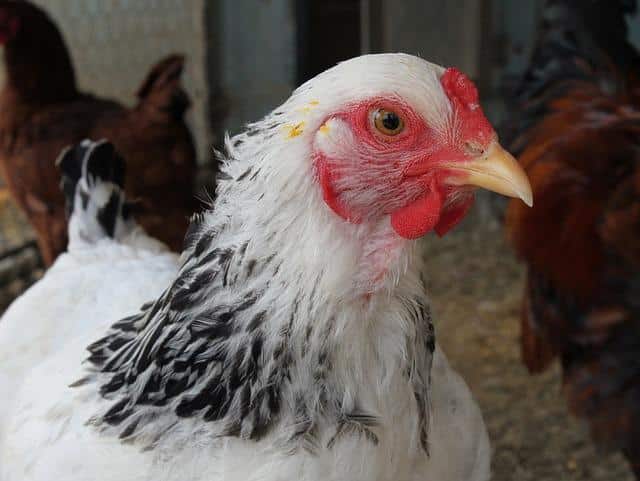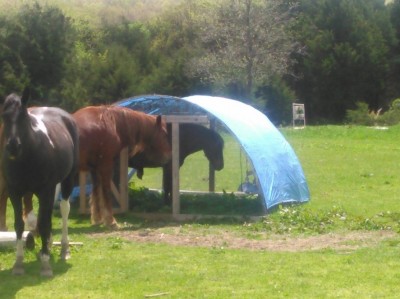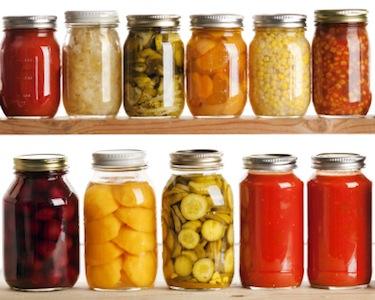
Well, it seems that spring is finally here. I can see it in my fruit trees as they blossom, and hear it in the night sounds of frogs and insects that are slowly coming back after many months of silence. With the change of season, there always comes a chore list on a homestead.
Around my place, one of the things spring means is that it’s time to gear up for raising meat chickens. That is, it is time to get the chicken tractors in order, the brooders ready, and the feed and chicks ordered.
When I first started raising meat chickens, I envisioned it as being an income source in addition to a means of providing good wholesome food for my family. I started the venture with the notion of producing a free-range, GMO-free product. It didn’t go as I had hoped. Free-range works well for my egg-producing chickens, but what we found out through experience is that free-range slows the growth rate and produces an ultimately smaller and inferior bird for eating purposes. Modern meat-producing breeds are generally poor foragers, and are designed to grow and put on weight quickly with a steady supply of easily obtained feed. Thus, I opted for raising the chickens in the pasture, and to this end constructed several 10 by 12 chicken tractors.
Diatomaceous Earth: The All-Natural Livestock De-Wormer
The chicken tractors house 40 chickens each. By moving these tractors once or twice each day, we achieve two things. First, our chickens get some supplemental feed in the form of available grasses and greens. Second, our chickens are always in a clean environment. The daily moving of the tractors is something that my young twin boys have enjoyed helping with since they were three.
I stuck to my guns on the GMO-free part of the original equation. However, finding GMO-free feed proved difficult, as we had to travel some distance to get it in bulk — and it was ridiculously expensive. Feed expense becomes a big issue when each bird requires 14 pounds of feed to grow out and you are raising 120 of them.
Ultimately, the chicken venture proved to be untenable from a commercial standpoint. Between the cost of chicks and feed, the time and diesel fuel required to move the tractors, the cost of certified commercial butchering and labeling, and the expense of getting the product to the farmers’ market, we had to sell chicken at more than $3 a pound to even eke out a minimal profit. Our area is not conducive to selling chicken at that price; it isn’t that people don’t care about that kind of product, but rather they can’t afford it.
But it wasn’t a fruitless endeavor. I inspired others to raise their own chicken, and taught them how to do it if they were interested. So, from that standpoint it was an excellent feel-good activity! I still believe that in the right area it could be profitable, but you need a more urban setting with a high concentration of well-employed and health-conscious customers. For me, it has become just a way to provide good food for my family.

The tractors themselves are fairly easy to build. You will need:
- 3 12-feet 2x4s
- 2 10-feet 2x4s
- Scrap 2 by 4
- 3 4-feet-by-12 feet cattle panels
- 1 12-feet-by-12-feet tarp (I often go to 10-feet-by-10-feet to save a few bucks, and they are easier to find)
- 1 50-feet roll of chicken wire, 4-feet wide
- A box of deck screws
- A box of fence staples
- Cable ties
- 25 feet of good rope
To start, you will build your 10-by-12 base using your 12-feet and 10-feet 2x4s — use two 12-feet sides, two 10-feet ends, and a 12 footer trimmed by about 3 ½ inches to fit in the center. These are attached with 3-inch deck screws, and scraps of 2 by 4 are used to make corner braces.
Next, the cattle panels are arched over this frame, secured by fence staples. The result looks like a wire hoop house.
This Cool-To-The-Touch Lantern Provides 100,000 Hours Of Emergency Backup Lighting
Using more scrap lumber, build end frames and a door for one end; my design is always dictated by what scraps I have on hand.
The tarp is stretched over the cattle panels and secured with cable ties. The final step is to cover the tarp with the chicken wire, and cover the ends with chicken wire as well. Your rope is used to make a tow harness for the completed tractor.
Additionally, you will need feeders and waterers for your birds. Old rain gutter makes a great feeder, and if you don’t want to buy commercially produced waterers, your imagination is the only constraint. (I have uses 3-inch PVC and poultry nipples from a farm supply store to construct large watering apparatus.)
We grow Cornish cross chickens for their meatiness and rapid growth. They spend about two weeks in the brooder before going onto pasture in the tractors. Once they are in the tractors, I take them feed, and I fill the waterers twice a day when I move them; I move them one tractor length each time to keep the birds on fresh ground.
Chicken tractors are a great way to raise meat chickens, and a fun way to get the family involved in your homesteading activities. It is also a great way to have total control over what goes into the food you eat. And, let’s face it, everything tastes better when you grew it yourself.
Related:
How Chicken Tractors Can Increase Egg Production – And Get Rid Of That Nasty ‘Coop Smell,’ Too
Have you ever used chicken tractors? What advice would you add? Share it in the section below:
Harness The Power Of Nature’s Most Remarkable Healer: Vinegar










